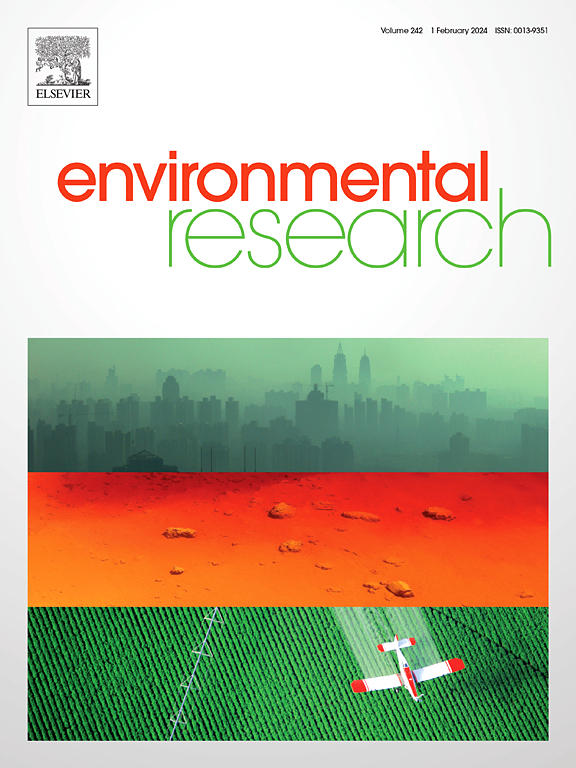Toward greener MOFs in phosphate adsorption: A performance-based approach to green MOF selection
IF 7.7
2区 环境科学与生态学
Q1 ENVIRONMENTAL SCIENCES
引用次数: 0
Abstract
This study presents a performance-driven selection of green metal-organic frameworks (MOFs), integrating yield, cost-effectiveness, and adsorption efficiency, critical yet often overlooked criteria in MOF development. The selected MOFs were synthesized using environmentally benign solvents, ethanol (EtOH) and deionized water (DIW), under mild temperature conditions, offering a scalable and sustainable route. Three zirconium-based green MOFs were identified: one Terephthalic acid (TPA)-based (GR2-MOF(80)) and two Pyromellitic acid (PMA)-based (GR8-MOF(25) and GR10-MOF(25)). These materials outperformed commercial benchmarks such as UIO-66, exhibiting high phosphate adsorption capacities while following Langmuir isotherm behaviour, pseudo-second-order kinetics, and intra-particle diffusion mechanisms. Modifications in the activation process further enhanced adsorption, achieving up to 83 mg PO4·g−1 for the TPA-based MOF and 221 mg PO4·g−1 for the PMA-based MOFs. Structural characterization via scanning electron microscopy (SEM), Fourier-transform infrared spectroscopy (FTIR), energy-dispersive X-ray spectroscopy (EDS), X-ray diffraction (XRD), and X-ray photoelectron spectroscopy (XPS) confirmed the crystalline nature of the TPA-based MOF and the amorphous character of the PMA-based ones, supporting chemisorption as the dominant mechanism. Beyond capacity, these MOFs demonstrated high selectivity in both binary and complex media and retained efficiency over multiple reuse cycles, reinforcing their practical potential for environmental applications. More than a case study on phosphate removal, this work demonstrates how a rational selection framework can guide the development of environmentally sustainable MOFs for broader applications in water treatment and beyond.
迈向更环保的磷酸盐吸附MOF:基于性能的绿色MOF选择方法
本研究提出了绿色金属有机框架(MOF)的性能驱动选择,综合了产量、成本效益和吸附效率,这是MOF发展中经常被忽视的关键标准。在温和的温度条件下,使用环境友好的溶剂乙醇(EtOH)和去离子水(DIW)合成了选定的mof,提供了可扩展和可持续的路线。鉴定出三种锆基绿色mof:一种基于对苯二甲酸(TPA)的GR2-MOF(80),两种基于邻苯二甲酸(PMA)的GR8-MOF(25)和GR10-MOF(25)。这些材料优于UIO-66等商业基准材料,表现出高磷酸盐吸附能力,同时遵循Langmuir等温行为、伪二级动力学和颗粒内扩散机制。对活化过程的修改进一步增强了吸附,tpa基MOF的PO4·g−1最高可达83 mg, pma基MOF的PO4·g−1最高可达221 mg。通过扫描电子显微镜(SEM)、傅里叶变换红外光谱(FTIR)、能量色散x射线能谱(EDS)、x射线衍射(XRD)和x射线光电子能谱(XPS)的结构表征,证实了tpa基MOF的结晶性质和pma基MOF的无定形性质,支持化学吸附是主要机理。除了容量之外,这些MOFs在二元和复杂介质中都表现出高选择性,并且在多次重复使用循环中保持效率,从而增强了它们在环境应用方面的实际潜力。这项工作不仅仅是对磷酸盐去除的案例研究,还展示了合理的选择框架如何指导环境可持续mof的开发,以广泛应用于水处理和其他领域。
本文章由计算机程序翻译,如有差异,请以英文原文为准。
求助全文
约1分钟内获得全文
求助全文
来源期刊

Environmental Research
环境科学-公共卫生、环境卫生与职业卫生
CiteScore
12.60
自引率
8.40%
发文量
2480
审稿时长
4.7 months
期刊介绍:
The Environmental Research journal presents a broad range of interdisciplinary research, focused on addressing worldwide environmental concerns and featuring innovative findings. Our publication strives to explore relevant anthropogenic issues across various environmental sectors, showcasing practical applications in real-life settings.
 求助内容:
求助内容: 应助结果提醒方式:
应助结果提醒方式:


